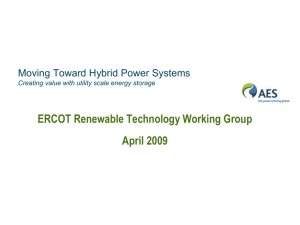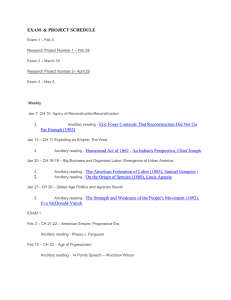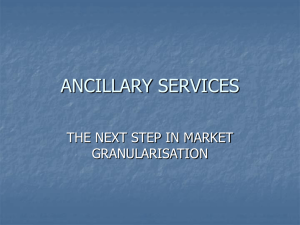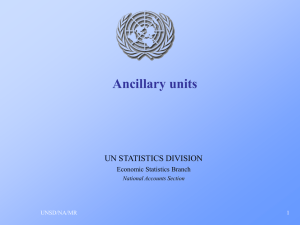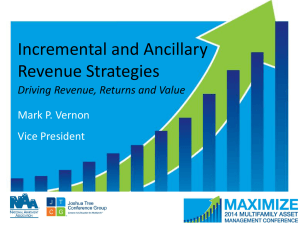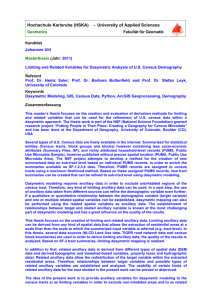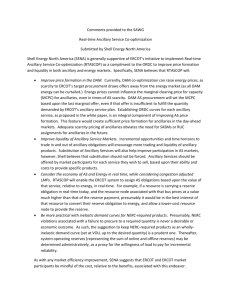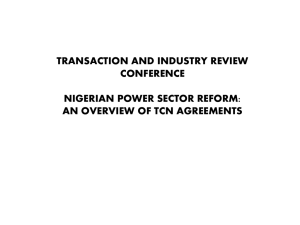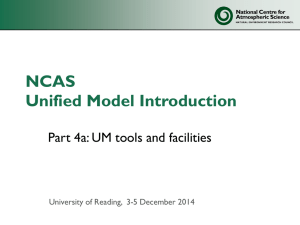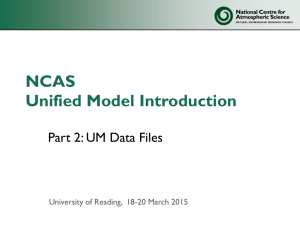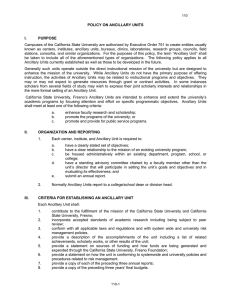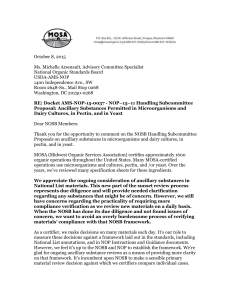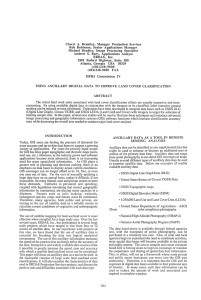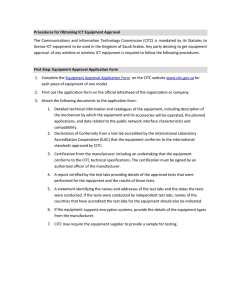the project smartnet
advertisement
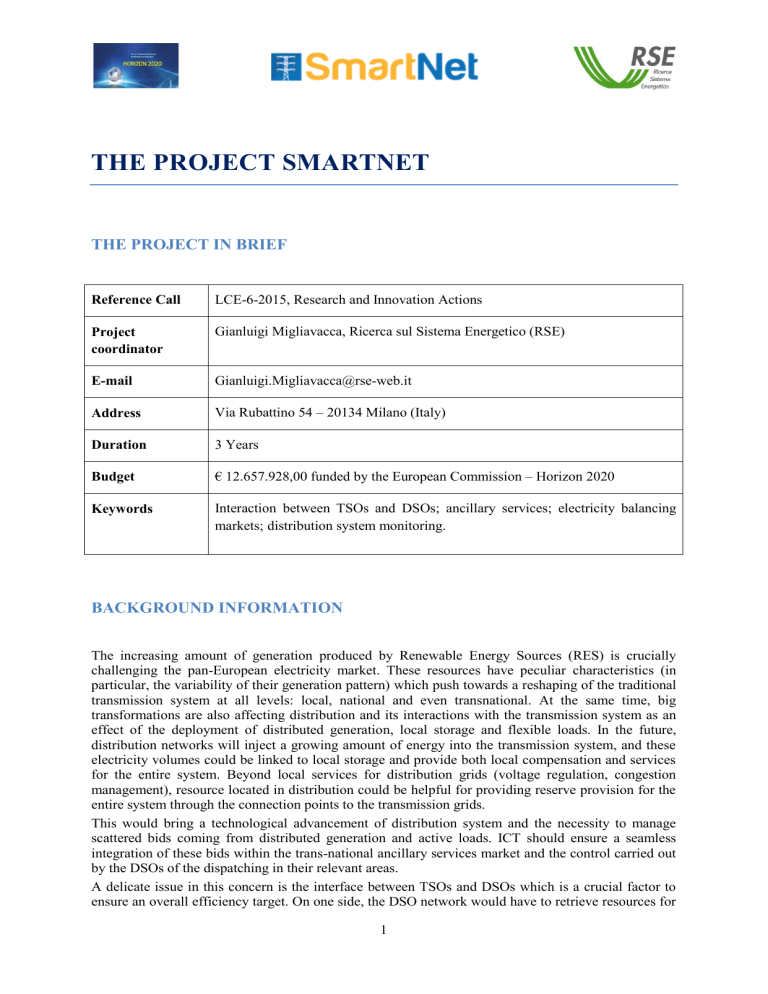
THE PROJECT SMARTNET THE PROJECT IN BRIEF Reference Call LCE-6-2015, Research and Innovation Actions Project coordinator Gianluigi Migliavacca, Ricerca sul Sistema Energetico (RSE) E-mail Gianluigi.Migliavacca@rse-web.it Address Via Rubattino 54 – 20134 Milano (Italy) Duration 3 Years Budget € 12.657.928,00 funded by the European Commission – Horizon 2020 Keywords Interaction between TSOs and DSOs; ancillary services; electricity balancing markets; distribution system monitoring. BACKGROUND INFORMATION The increasing amount of generation produced by Renewable Energy Sources (RES) is crucially challenging the pan-European electricity market. These resources have peculiar characteristics (in particular, the variability of their generation pattern) which push towards a reshaping of the traditional transmission system at all levels: local, national and even transnational. At the same time, big transformations are also affecting distribution and its interactions with the transmission system as an effect of the deployment of distributed generation, local storage and flexible loads. In the future, distribution networks will inject a growing amount of energy into the transmission system, and these electricity volumes could be linked to local storage and provide both local compensation and services for the entire system. Beyond local services for distribution grids (voltage regulation, congestion management), resource located in distribution could be helpful for providing reserve provision for the entire system through the connection points to the transmission grids. This would bring a technological advancement of distribution system and the necessity to manage scattered bids coming from distributed generation and active loads. ICT should ensure a seamless integration of these bids within the trans-national ancillary services market and the control carried out by the DSOs of the dispatching in their relevant areas. A delicate issue in this concern is the interface between TSOs and DSOs which is a crucial factor to ensure an overall efficiency target. On one side, the DSO network would have to retrieve resources for 1 local services (e.g. voltage support, congestion management) and on the other, it should function as a collector of services for the whole system, in coordination with the adjoining TSO. A strict real-time coordination will be needed between the different actors that are involved in the provision of ancillary services, particularly if connected to secondary and tertiary regulation. Figure 1 – Interaction for provision of ancillary services Sets of bids aggregating availability coming from distributed generation, especially if integrated with local storage (VPPs), as well as from flexible load, could be presented to the trans-national Market Operator allowing a higher market liquidity and a better availability of dispatching solutions on the territory. ICT is going to be key also at this level in order to ensure a seamless integration of these bids coming from distribution within the trans-national ancillary services market and an integration with the control carried out by the DSOs of the dispatching in their relevant areas. OBJECTIVES The current scenario opens several questions that research should tackle in order to optimize the coordination between TSOs and DSOs in managing the exchange of information for monitoring and for the acquisition of ancillary services both at the domestic level and in the pan-European context. The main aspects SmartNet is to investigate are the following: Which ancillary services could be provided for distribution to the whole system (via Transmission)? Which optimized modalities could be adopted for managing the network at the TSO-DSO interface and what monitoring and control signals could be exchanged to carry out a coordinated action? 2 How the architectures of the real time markets (in particular the balancing markets) could be consequently revised? What information has to be exchanged and what role ICT plays in the coordination between distribution and transmission, to guarantee observability and control of distributed generation, flexible demand and storage systems? Which implications could the above issues have on the on-going market coupling process, that is going to be extended to real time markets over the next few years, according to the draft Network Code on Electricity Balancing by ENTSO-E? Different TSO-DSO interaction modalities are compared on the basis of national key cases. Physical pilots are defined for the same national cases (Italy, Denmark, and Spain) in order to analyze issues regarding the monitoring of distribution parameters from transmission and analyze modalities for the acquisition of ancillary services from specific resources located in distribution systems (indoor swimming pools and radio base stations of a telecommunication company). PROJECT LAYOUT To meet the goals above, the project has been organised around 4 phases, declined along the following technical work packages: TSO-DSO coordination for accommodating ancillary services from distribution networks (WP1) Market architectures integrating ancillary services from distributed energy resources (WP2) Communication and ICT requirements (WP3) Development of the national cases in lab test environment (WP4) Physical pilots realization (WP5) Regulatory, planning and operation implications of TSO-DSO coordination (WP6) Figure 2 - Chronologic phases of the project 3 Additionally, two work packages are dedicated to dissemination, stakeholders involvement, impact assessment and exploitation (WP7) and administrative and technical management (WP8). PARTNERS The consortium, under technical and administrative management by RSE, is formed by a well equilibrated mix of partners from 9 European Countries: R&D PARTNERS Research Organizations: RSE, AIT, SINTEF, Tecnalia, VITO, VTT Universities: DTU, Uni-Strathclyde, KU Leuven Other: EUI/FSR INDUSTRIAL PARTNERS TSO: Energinet.dk, TERNA DSO: ENDESA, NYFORS, SELNET Manufacturers: SELTA, SIEMENS Italia Software developers: Eurisco, N-SIDE Telecom: VODAFONE Trader: Danske Commodities Vacation rental: NOVASOL Figure 3 – Geographical spread of the SmartNet consortium 4
